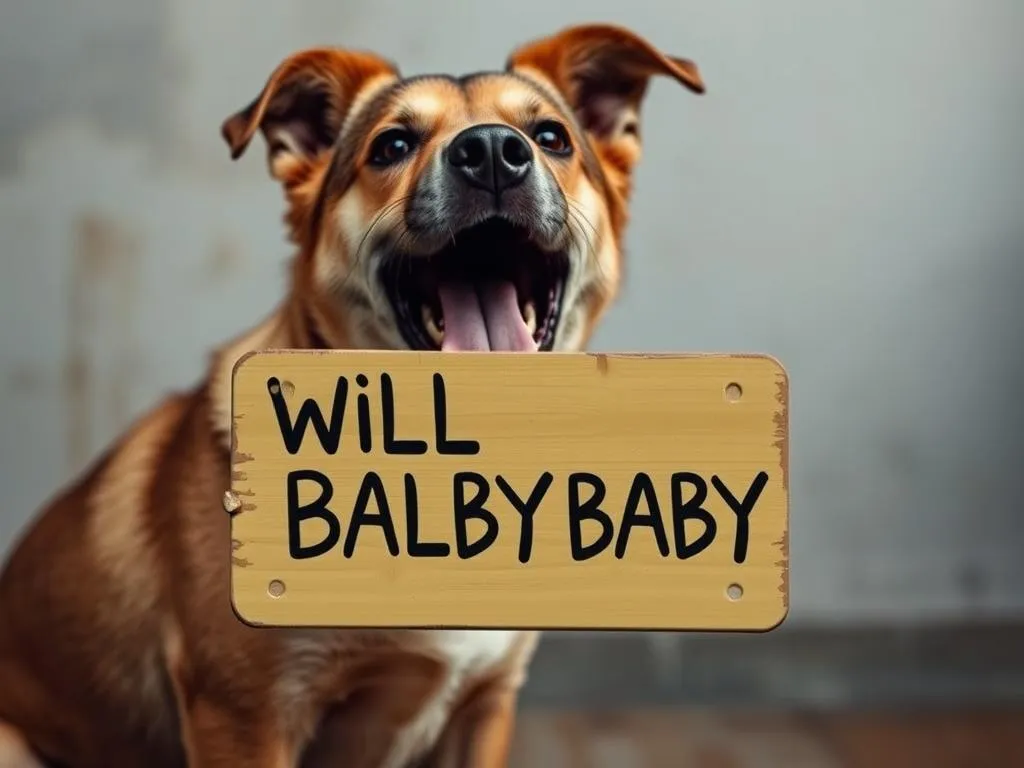
Introduction
Understanding dog behavior is crucial for families, especially when there are young children involved. Dogs are beloved members of many households, but their instincts and reactions can vary significantly, particularly around infants. It’s essential for dog owners to recognize the signs dog will attack baby to prevent potential aggressive incidents. This article will educate pet owners on how to identify warning signs of aggression and take necessary precautions to ensure a safe environment for both dogs and babies.
Understanding Dog Behavior
Basic Canine Instincts
Dogs are driven by a mix of instincts that influence their behavior. These instincts include predatory drives, protective instincts, and social behaviors. For instance, a dog’s natural inclination to protect its territory can lead to aggressive behavior if it perceives a baby as a potential threat. Understanding these instincts is vital in deciphering how dogs may react to the presence of a child.
Factors Influencing Dog Behavior
Several factors influence a dog’s behavior, including:
- Genetics and Breed Tendencies: Certain breeds are more prone to aggressive behavior due to their genetic makeup. Understanding your dog’s breed can provide insight into its instincts.
- Socialization and Training History: A dog’s past experiences, including socialization with children and training, can significantly shape its behavior. Dogs that have had positive interactions with infants may be more tolerant.
- Environment and Past Experiences: A dog’s environment, including how it has been treated and its experiences with children, can greatly impact its behavior. Negative experiences can lead to fear and aggression.
Recognizing Aggressive Signs in Dogs
Warning Signals of Aggression
It’s essential to be able to identify the warning signals of aggression in dogs. Common indicators include:
- Body Language: Dogs may exhibit signs such as growling, baring their teeth, or displaying a stiff posture when they feel threatened or are preparing to act aggressively.
- Vocal Signals: Barking or whining can indicate a dog’s discomfort or agitation. Pay attention to the tone and frequency of the sounds.
- Situational Triggers: Certain situations can provoke aggressive responses, such as food aggression or territorial behavior. Understanding these triggers can help you manage your dog’s reactions better.
Specific Signs Relating to Babies
When it comes to infants, there are specific behaviors that may indicate a dog is uncomfortable or potentially aggressive:
- Protective Behavior vs. Aggression: Dogs may display protective behavior towards their owners or territory. However, if this behavior escalates or turns aggressive, it is a cause for concern.
- Signs of Stress or Discomfort: Watch for signs such as excessive panting, pacing, or an unwillingness to approach the baby. These can indicate that a dog feels threatened or anxious.
- Changes in Behavior When Baby Is Present: If your dog suddenly becomes more aggressive or agitated when a baby is around, this could signal a problem. It’s essential to monitor these changes closely.
Common Situations Leading to Aggression
Dog’s Perception of Threats
Dogs may interpret a baby as a threat for various reasons. A baby’s sudden movements, loud noises, or unfamiliar smells can trigger a dog’s defensive instincts. Understanding how your dog perceives these situations can help you manage their reactions effectively.
Misunderstanding Baby Behaviors
Babies often engage in sounds and movements that can provoke a dog’s instinctual responses. For example:
- Crying: The sound of a baby crying may be interpreted as a distress signal by a dog, potentially leading to protective or aggressive behavior.
- Quick Movements: Babies are often unpredictable in their movements, which can startle a dog and provoke a defensive reaction.
Case Studies or Examples of Common Scenarios Leading to Aggression
Consider the following examples:
- A dog that has not been properly socialized may react aggressively to a baby’s sudden movements or loud noises.
- An older dog that has experienced a traumatic event may become anxious or aggressive when faced with the unpredictability of an infant.
Prevention and Management
Early Socialization and Training
One of the most effective ways to prevent aggression is through early socialization and training. Introducing your dog to various environments, people, and especially children can help them become more accustomed to different situations, reducing the likelihood of aggressive behavior.
- Training Techniques: Use positive reinforcement methods to encourage desired behaviors. Training should include commands that promote calmness and obedience, which can help manage your dog’s reactions around babies.
Creating a Safe Environment
Creating a safe home environment is key to preventing potential aggression:
- Dog-proofing the Home: Ensure that areas where the baby will be spending time are safe for both the baby and the dog. Remove any items that could provoke your dog or that the baby could reach.
- Establishing Boundaries and Safe Zones: Create designated areas where the dog can retreat when feeling overwhelmed. This space should be off-limits to the baby, giving the dog a safe place to relax.
Monitoring Interactions
Supervising interactions between dogs and babies is crucial:
- Guidelines for Supervised Interactions: Always supervise interactions, especially in the early stages. Never leave a dog alone with a baby, regardless of the dog’s temperament.
- Recognizing When to Intervene: Be vigilant for any signs of stress or discomfort from your dog. If you notice any aggressive behavior or signs of anxiety, it’s important to intervene immediately and safely separate the dog from the baby.
What to Do If Aggression Occurs
Immediate Actions to Take
If a dog shows aggression towards a baby, it’s essential to remain calm. Do not panic, as this can escalate the situation. Here are steps to take:
- Remove the Baby: Safely and calmly remove the baby from the situation to ensure their safety.
- Distract the Dog: Use a toy or treat to redirect the dog’s attention away from the baby.
- Assess the Situation: Determine what triggered the aggressive behavior and address it accordingly.
Professional Help
If aggression continues or escalates, it may be necessary to seek professional help:
- Veterinarian Consultation: A veterinarian can assess whether there are underlying health issues contributing to the dog’s behavior.
- Animal Behaviorist: Consulting with a certified animal behaviorist can provide insights into your dog’s behavior and effective training strategies.
Conclusion
Recognizing the signs dog will attack baby is critical for the safety of both your pet and your child. By understanding dog behavior, identifying warning signs of aggression, and implementing preventative measures, you can create a harmonious environment for both dogs and babies. Proactive education and awareness are vital in ensuring that all members of the family coexist safely and happily.
With the right approach, it’s possible to foster a loving relationship between your dog and your baby, ensuring a joyful experience for everyone involved.









